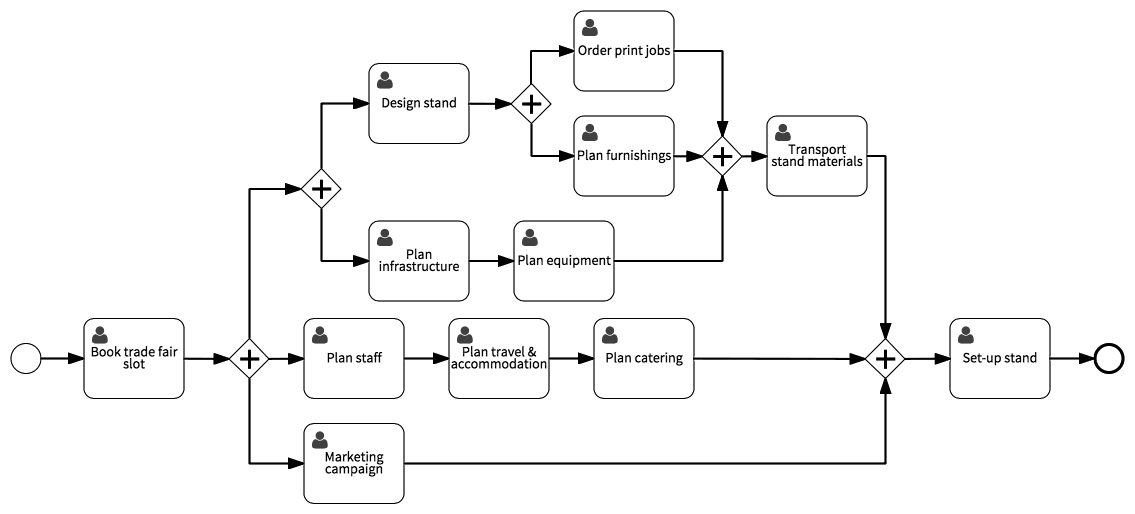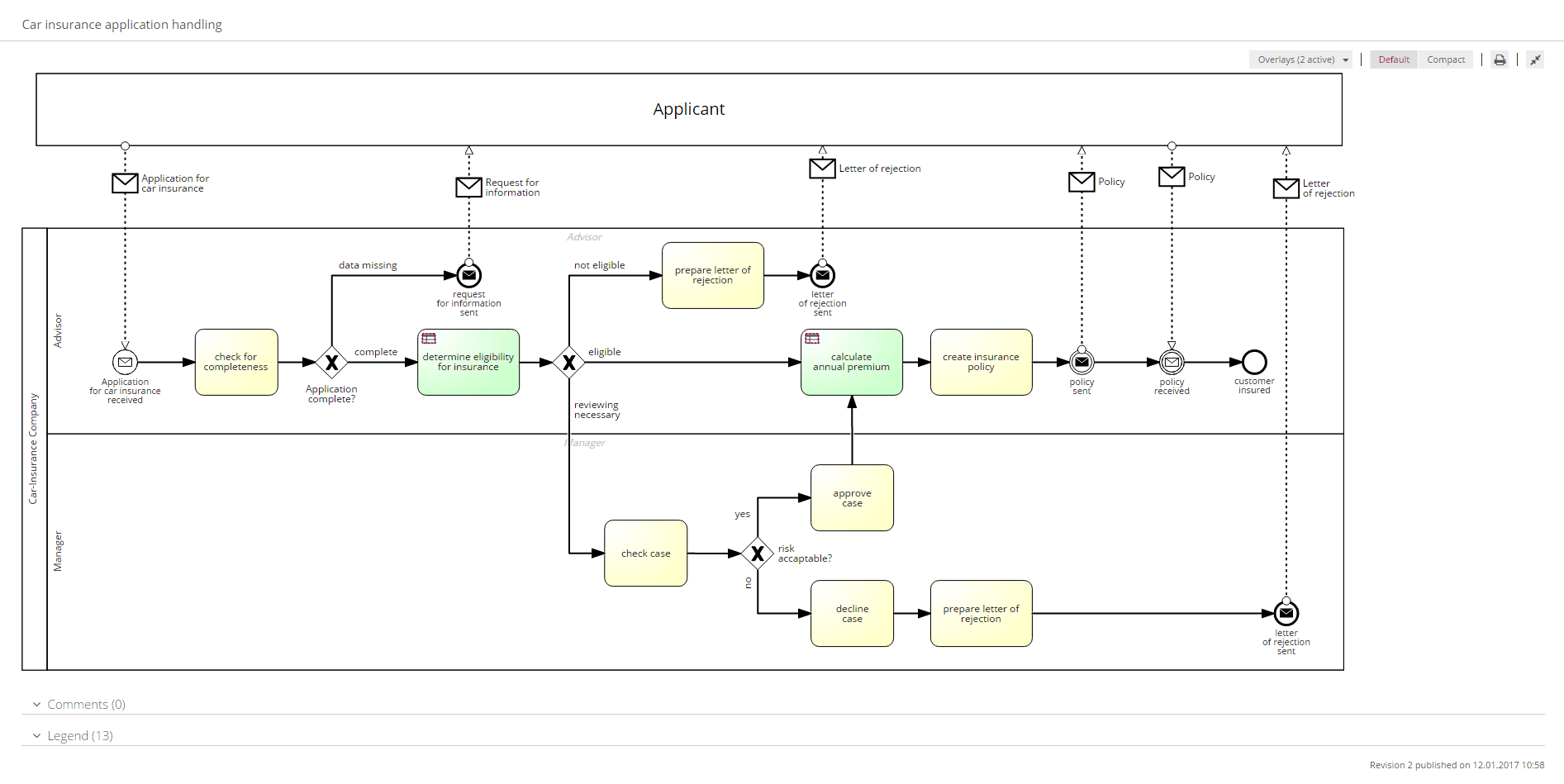big data
big data analytics
BPM
BPM life cycle
BPMN (2.0)
business applications
business decision making
business governance
business intelligence
business process
business process automation
business process automation software
business process diagram
business process goals
business process improvement
business process integration
business process management
business process map
business process mapping
business process model
business process modeling
business rule engine
big data
What is big data?
Big data are data sets that are so large they must be analyzed using non-traditional methods.
What are the benefits of big data?
Businesses can gain insights into customer analytics, network management, and predictive analytics by using big data. Using this type of data can help businesses make better management decisions by creating an environment for process mining. Big data also has advantages for tracking business contacts and understanding what they're most interested in.
big data analytics
The process of collecting, organizing, and analyzing large sets of data that cannot be analyzed using traditional methods. Big data anlytics can assist wtih business intelligence because they reveal patterns that help drive trends. Big data sets were previously unusable,but now they can help businesses make decisions using more information.
BPM
see business process management
BPM life cycle
What is BPM life cycle?
BPM or Business Process lifecycle is a number of management activities arranged in a cycle. It includes six distinct activities: design, modeling, execution, monitoring, and optimization.
Why should you use a BPM life cycle?
BPM life cycles help businesses improve business processes in an organized way and allow for constant improvement and reevaluation.
BPMN (2.0)
BPMN 2.0 is the latest version of the global standard for process modeling notation. It is used by businesses in modeling diagrams to understand processes and create refinements in workflows. BPMN is a global notation so it is uniform across different business process management software. Signavio uses BMPN 2.0 in all of its products to retain consistency with the BPM market.
business applications
Any software or set of computer programs that are essential to running a busines can be considered a business application. Some examples could include management systems, operating systems, and software systems. Signavio's Process Transformation Suite contains four integrated applications that promote a better understanding of business processes, assist in translating requirements into rules, distribute tasks more efficiently, and analyze processes based on real data.
business decision making
see decision making
business governance
Sometimes called corporate governance, business governance is a framework of rules and policies put in place to monitor and evaluate the mechanism and processes that control a company. It is usally created and implemented by the board of directors and can also take into account the needs or desires of stakeholders.
business intelligence
Sometimes referred to as BI, it is an umbrella term referring to a variety of applications used to analyze data. It can include data mining, analytics processing, and reporting, for example. The goal is to support the collection and understanding of business information. BI can also refer more broadly to the set of strategies, processes, and products that support the collection and analysis of business information. For example, analytics reporting and information management could fall under the umbrella of BI.
business process
Activites or tasks arranged in a sequence to reach a pre-defined outcome or result.
How does process play into business management?
Taking a process view allows information about different systems and work flows to be read and evaluated.
Why should you use process to manage a business?
Thinking in terms of processes can increase productivity and collaboration by showing how information or materials are handled from start to finish. The BPM (or business process management) approach is based on processes.
business process automation
A way to streamline processes by implementing automatic functions during a task or process. Automation saves businesses time and money by reducing manual triggers.
business process automation software
see process automation software
business process diagram
see process diagram
business process goals
What are business process goals?
They are a set of predefined aspirational metrics that a business would like to acheive in process management. Some examples include reducing costs, decreasing time for production, or increasing productivity.
What are the benefits of setting business process goals?
Goals can provide motivation when evaluating business processes and give direction when processes undergo revisions. The Process Transformation Suite can help businesses achieve goals because it provides real data to help you analyze and revise current processes.
business process improvement
The act of reviewing and analyzing a process in order to make it more effecient or valuable from a business perspective.
What are the benefits of business process improvement?
It can be used to improve the use of resources, alleviate time constraints, increase team collaboration, or help with the privacy or security of information, for example. Signavio's Process Transformation Suite takes a unique approach to integrating processes across a business for the purpose of process improvement.
business process integration
the harmonization of a company's internal operations with each other and/or with external partners in real-time. Business process integration allows for better communication between systems and different technologies and promotes collaboration within an enterprise.The Process Transformation Suite supports process integration in businesses by allowing all processes to be combined and analyzed.
business process management
Sometimes referred to as BPM, business process management is a type of management that works to improve performance by optimizing a business's processes. It uses an international notaion standard known as BPMN 2.0 (Business Process Model and Notation) which was created to help model processes and align business with IT. BPM can also be referred to as business process optimization. Our Process Transformation Suite focuses on business process management with four integrated solutions to optimize productivity and efficiency.
business process map
What is a process map?
A process map is a graphic illustraion used to demonstrate the flow of business processes.
Why should you use a business process map?
It can help you identify inefficiencies or understand where bottlenecks occur, which can bring added value to your business. Mapping work streams allows for exercises in process improvement as well as modeling procedures.
Who needs a process map?
Management of all levels can use process mapping to better understand workflows but it can also promote collaboration among all members of a team.
Business Process Map Example (Plan Trade Fair Booth)
business process mapping
business process model
Business Process Map Example (Car insurance Application Handling)
business process modeling
A way to visualize a business process using a graphical depiction, diagram, or chart of the processes, including subprocesses and tasks or activities. Using a model allows for analysis and development of the process for revision or improvement. Process modeling can also assist in planning for future contingencies or seeing how a change will play out before it is implemented.
business rule engine
What is a business rule engine?
A business rule engine is a software system that executes business rules in a runtime production environment. Business rules are simply another name for business logic.
What are the benefits of a business rule engine?
It enables compnay policies and operational decisions to be defined, tested, and executed separate from the application code.


